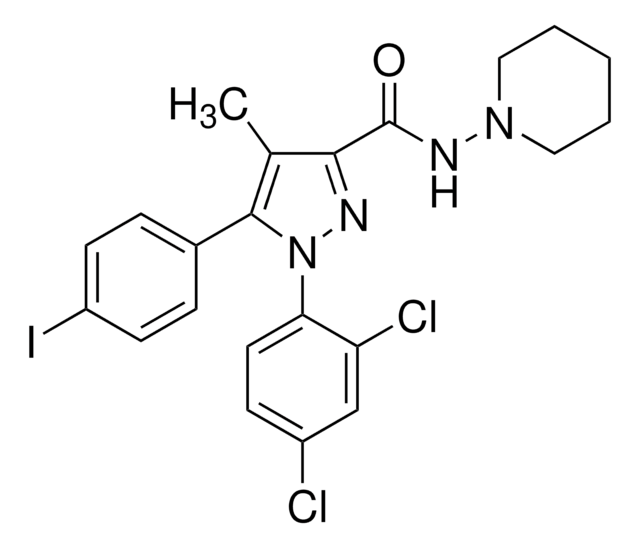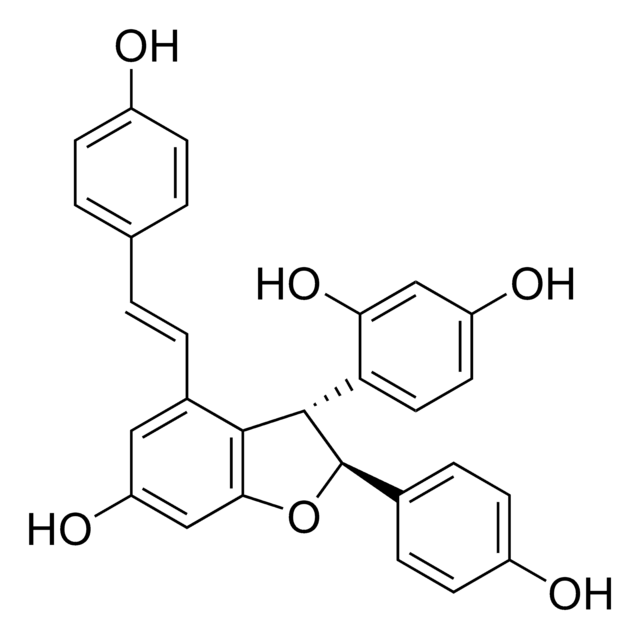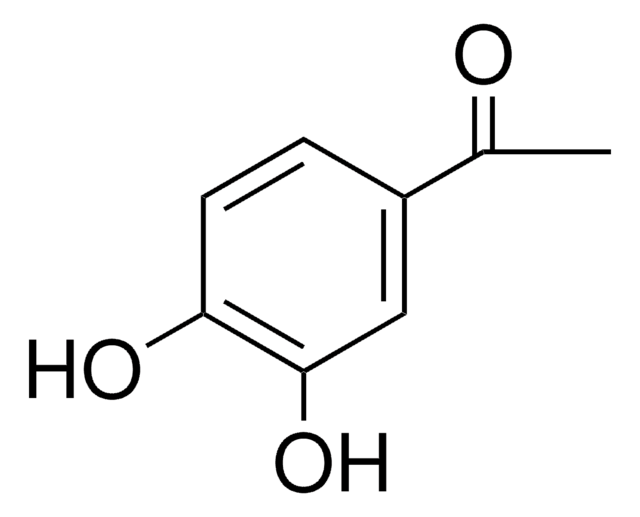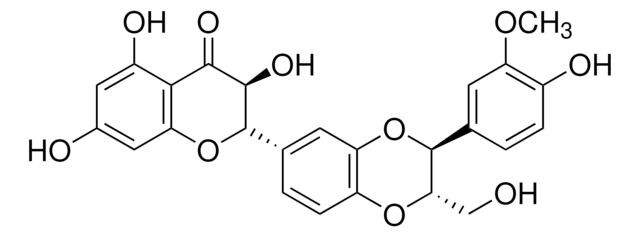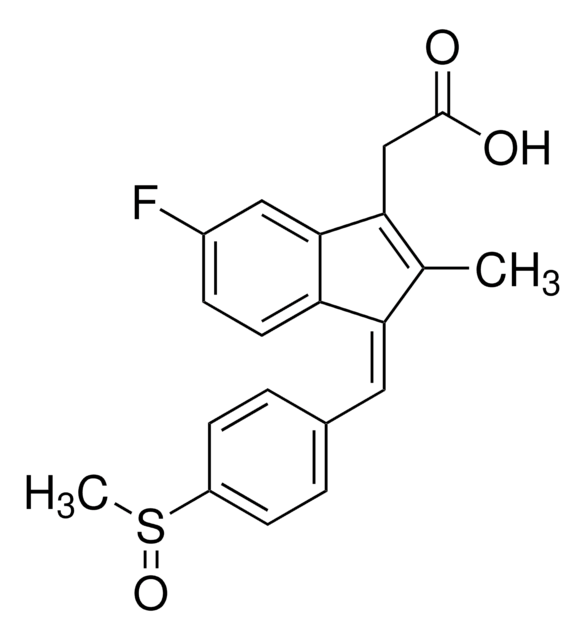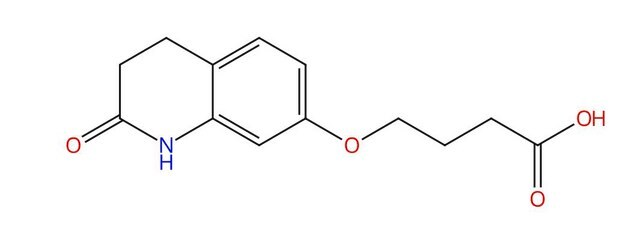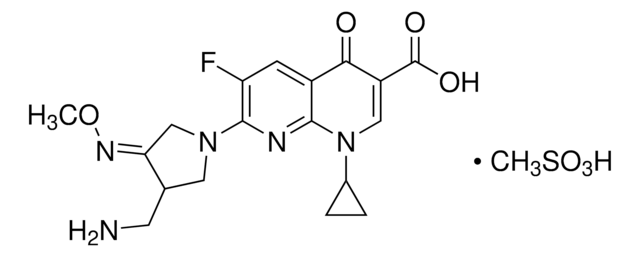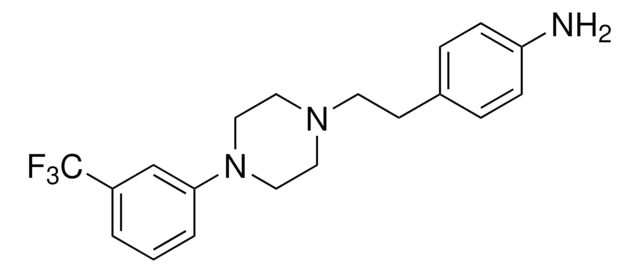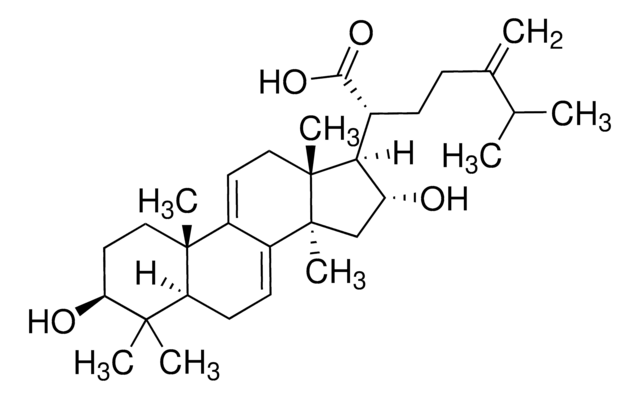S1438
Sulindac sulfone
≥94% (HPLC), (solid or powder)
Sinónimos:
(Z)-5-Fluoro-2-methyl-1-[p-(methylsulfonyl)benzylidene]indene-3-acetic acid
About This Item
Productos recomendados
assay
≥94% (HPLC)
form
(solid or powder)
color
, Light Yellow to Dark Yellow
solubility
DMSO: >25 mg/mL
ethanol: 3 mg/mL (warm)
acetone: 5 mg (plus 0.1 ml)
originator
Merck & Co., Inc., Kenilworth, NJ, U.S.
SMILES string
CC1=C(CC(O)=O)c2cc(F)ccc2\C1=C\c3ccc(cc3)S(C)(=O)=O
InChI
1S/C20H17FO4S/c1-12-17(9-13-3-6-15(7-4-13)26(2,24)25)16-8-5-14(21)10-19(16)18(12)11-20(22)23/h3-10H,11H2,1-2H3,(H,22,23)/b17-9+
InChI key
MVGSNCBCUWPVDA-RQZCQDPDSA-N
Application
Biochem/physiol Actions
Features and Benefits
Preparation Note
Storage Class
11 - Combustible Solids
wgk_germany
WGK 3
flash_point_f
Not applicable
flash_point_c
Not applicable
ppe
Eyeshields, Gloves, type N95 (US)
Elija entre una de las versiones más recientes:
¿Ya tiene este producto?
Encuentre la documentación para los productos que ha comprado recientemente en la Biblioteca de documentos.
Contenido relacionado
Discover Bioactive Small Molecules for Lipid Signaling Research
Nuestro equipo de científicos tiene experiencia en todas las áreas de investigación: Ciencias de la vida, Ciencia de los materiales, Síntesis química, Cromatografía, Analítica y muchas otras.
Póngase en contacto con el Servicio técnico
